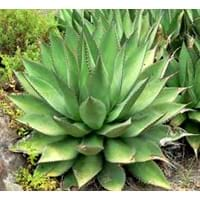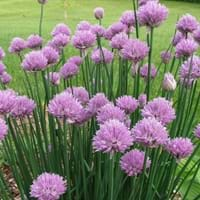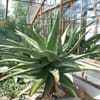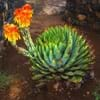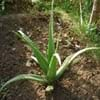Life Span
Perennial
Perennial
Type
Cactus or Succulent
Herbs
Origin
Western United States, Southwestern United States, Latin America and the Caribbean, Caribbean, Central America, South America
World/Pandemic, North America, Europe, Asia
Types
Agave americana
Agave angustifolia
Agave shawii
Common chives, Garlic chives, Siberian garlic chives, Giant Siberian chives
Habitat
Desert, Hardwood forests, Hillside, Humid climates, Rocky Ridges, wastelands
Rocky areas
USDA Hardiness Zone
Not Available
4-9
AHS Heat Zone
Not Available
9-1
Sunset Zone
Not Available
A1, A2, A3, H1, H2, 1a, 1b, 2a, 2b, 3a, 3b, 4, 5, 6, 7, 8, 9, 10, 11, 12, 13, 14, 15, 16, 17, 18, 19, 20, 21, 22, 23, 24
Habit
Not Available
Clump-Forming
Minimum Height
Not Available
Minimum Width
Not Available
Flower Color
Not Available
White, Pink, Lavender
Flower Color Modifier
Not Available
Not Available
Leaf Color in Spring
Not Available
Green, Light Green
Leaf Color in Summer
Not Available
Green
Leaf Color in Fall
Not Available
Green, Yellow green
Leaf Color in Winter
Not Available
Not Available
Leaf Shape
Long linear and narrow
Grass like
Plant Season
Spring, Summer, Fall, Winter
Spring, Summer, Fall
Sunlight
Full Sun
Full Sun, Partial Sun
Type of Soil
Not Available
Loam, Sand
The pH of Soil
Not Available
Neutral
Soil Drainage
Well drained
Well drained
Bloom Time
Not Available
Late Spring, Early Summer
Tolerances
Not Available
Not Available
Where to Plant?
Ground, Pot
Ground, Pot
How to Plant?
Seedlings
Seedlings, Transplanting
Plant Maintenance
Medium
Medium
Watering Requirements
Does not require lot of watering
Requires regular watering, Water every two or three days during warmer months, Water when soil is dry
In Summer
Lots of watering
Lots of watering
In Spring
Moderate
Moderate
In Winter
Average Water
Average Water
Soil pH
Not Available
Neutral
Soil Type
Not Available
Loam, Sand
Soil Drainage Capacity
Well drained
Well drained
Sun Exposure
Full Sun
Full Sun, Partial Sun
Pruning
Remove deadheads, Requires little pruning
Prune in spring, Prune in summer, Prune to stimulate growth, Remove deadheads
Fertilizers
All-Purpose Liquid Fertilizer
All-Purpose Liquid Fertilizer
Pests and Diseases
Red blotch
Bacterial leaf spot, Damping-off, Downy mildew, head rot, Pink Root, Rust, Thripes
Plant Tolerance
Drought
Drought
Flower Petal Number
Single
Single
Showy Fruit
Not Available
No
Edible Fruit
Not Available
No
Fragrant Flower
Not Available
Yes
Fragrant Fruit
Not Available
Yes
Fragrant Leaf
Not Available
Yes
Fragrant Bark/Stem
Not Available
Yes
Showy Bark
Not Available
No
Foliage Texture
Bold
Fine
Foliage Sheen
Not Available
Matte
Invasive
Not Available
No
Self-Sowing
Not Available
Yes
Attracts
Not Available
Not Available
Allergy
Not Available
Asthma, Diarrhea, Itchiness, Pain and fatigue, Skin rash
Aesthetic Uses
Showy Purposes
Not Used For Aesthetic Purpose
Beauty Benefits
Not Available
Not Available
Environmental Uses
Air purification
Air purification
Medicinal Uses
constipation, Gastrointestinal disorders
Antioxidants, Bone strength, Improve heart health, Nutrients
Part of Plant Used
Leaves, Sap, Seeds, Stem
Leaves, Seeds
Other Uses
Pulp can be used to make rope place mats and other goods, Used in making beverages
Employed in herbal medicine, Used As Food
Used As Indoor Plant
No
Yes
Used As Outdoor Plant
Yes
Yes
Garden Design
Container, Feature Plant, Foundation, Houseplant, Rock Garden, Wall
Alpine, Cutflower, Edible, Herb / Vegetable, Mixed Border, Rock Garden / Wall
Botanical Name
AGAVE
ALLIUM schoenoprasum
Common Name
Century plant
Chives, Cultivated Chives, Garden Chives
In German
Agave
Schnittlauch
In French
Agave
Ciboulette
In Spanish
Agave
Cebollino
In Greek
Agave
βολβοί φαγώσιμοι
In Portuguese
Agave
Cebolinha
In Polish
Agawa
Szczypiorek
In Latin
Agave
Sectivi porri
Phylum
Not Available
Spermatophyta
Class
Liliopsida
Liliopsida
Order
Asparagales
Asparagales
Family
Agavaceae
Liliaceae
Clade
Monocots
Angiosperms, Monocots
Tribe
Not Available
Not Available
Subfamily
Agavoideae
Allioideae
Number of Species
Not Available
Importance of Agave and Chives
Want to have the most appropriate plant for your garden? You might want to know the importance of Agave and Chives. Basically, these two plants vary in many aspects. Compare Agave and Chives as they differ in many characteristics such as their life, care, benefits, facts, etc. Every gardener must at least have the slightest clue about the plants he wants to plant in his garden. Compare their benefits, which differ in many ways like facts and uses. The medicinal use of Agave is constipation and Gastrointestinal disorders whereas of Chives is Antioxidants, Bone strength, Improve heart health and Nutrients. Agave has beauty benefits as follows: Not Available while Chives has beauty benefits as follows: Not Available.
Compare Facts of Agave vs Chives
How to choose the best garden plant for your garden depending upon its facts? Here garden plant comparison will help you to solve this query. Compare the facts of Agave vs Chives and know which one to choose. As garden plants have benefits and other uses, allergy is also a major drawback of plants for some people. Allergic reactions of Agave are Not Available whereas of Chives have Asthma, Diarrhea, Itchiness, Pain and fatigue and Skin rash respectively. Having a fruit bearing plant in your garden can be a plus point of your garden. Agave has no showy fruits and Chives has no showy fruits. Also Agave is not flowering and Chives is flowering. You can compare Agave and Chives facts and facts of other plants too.
